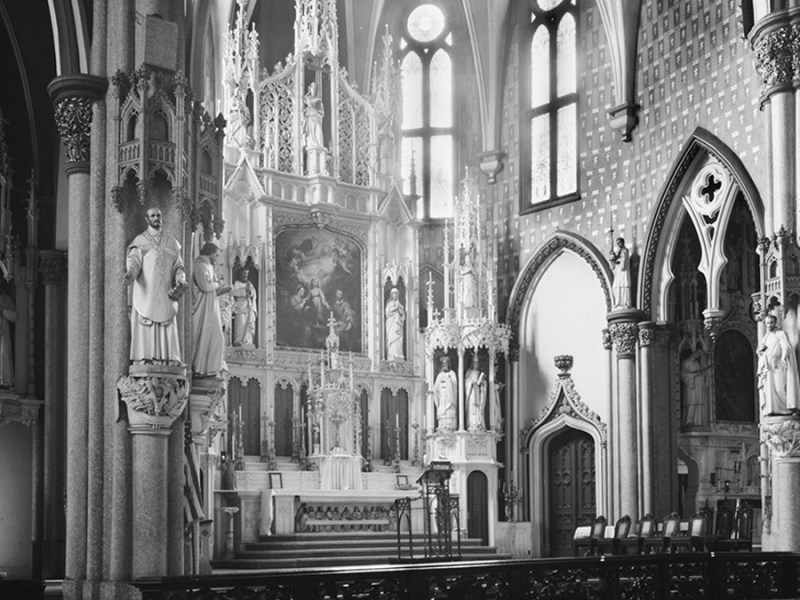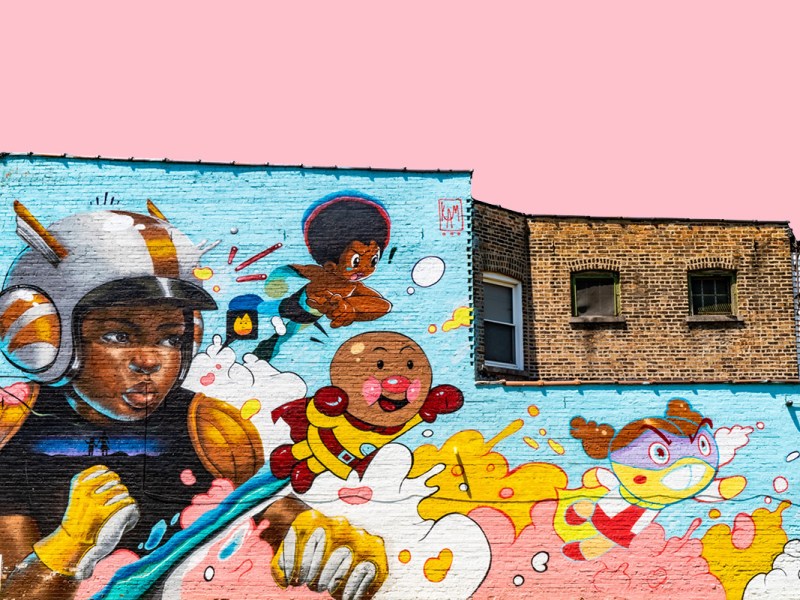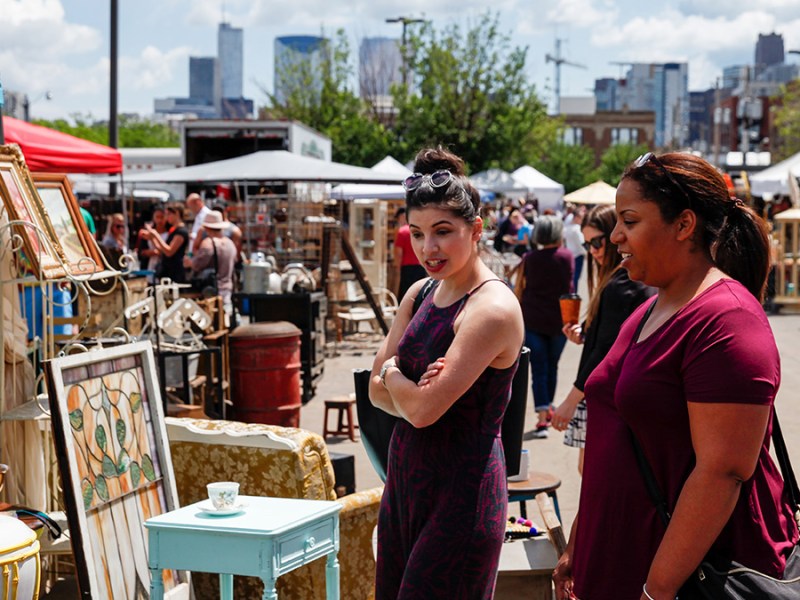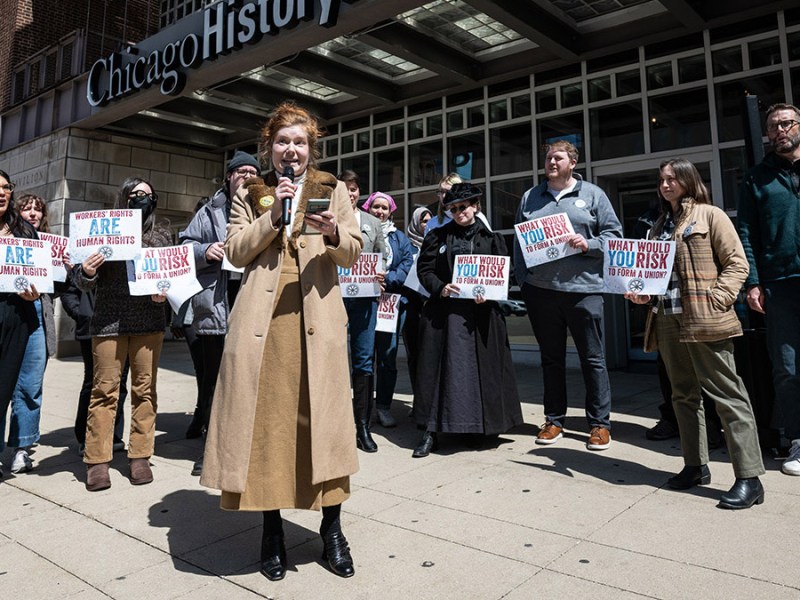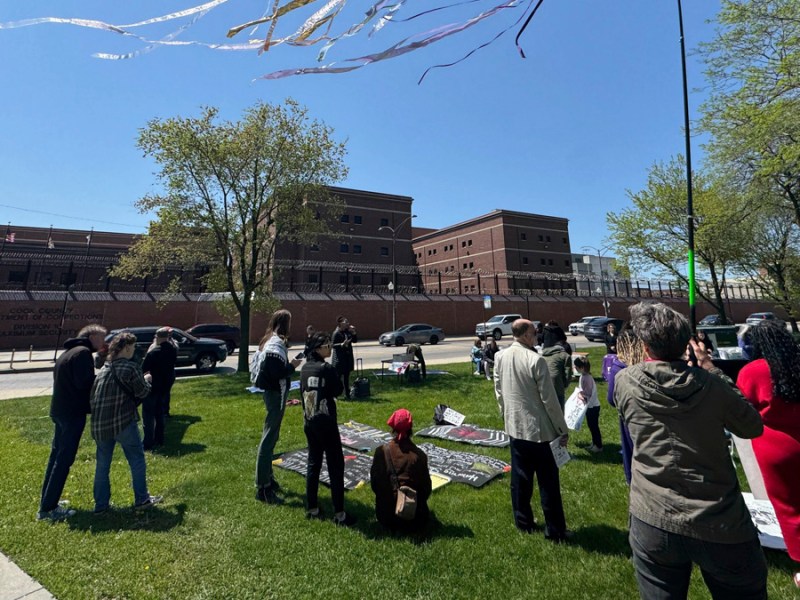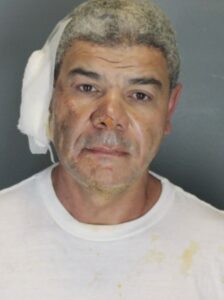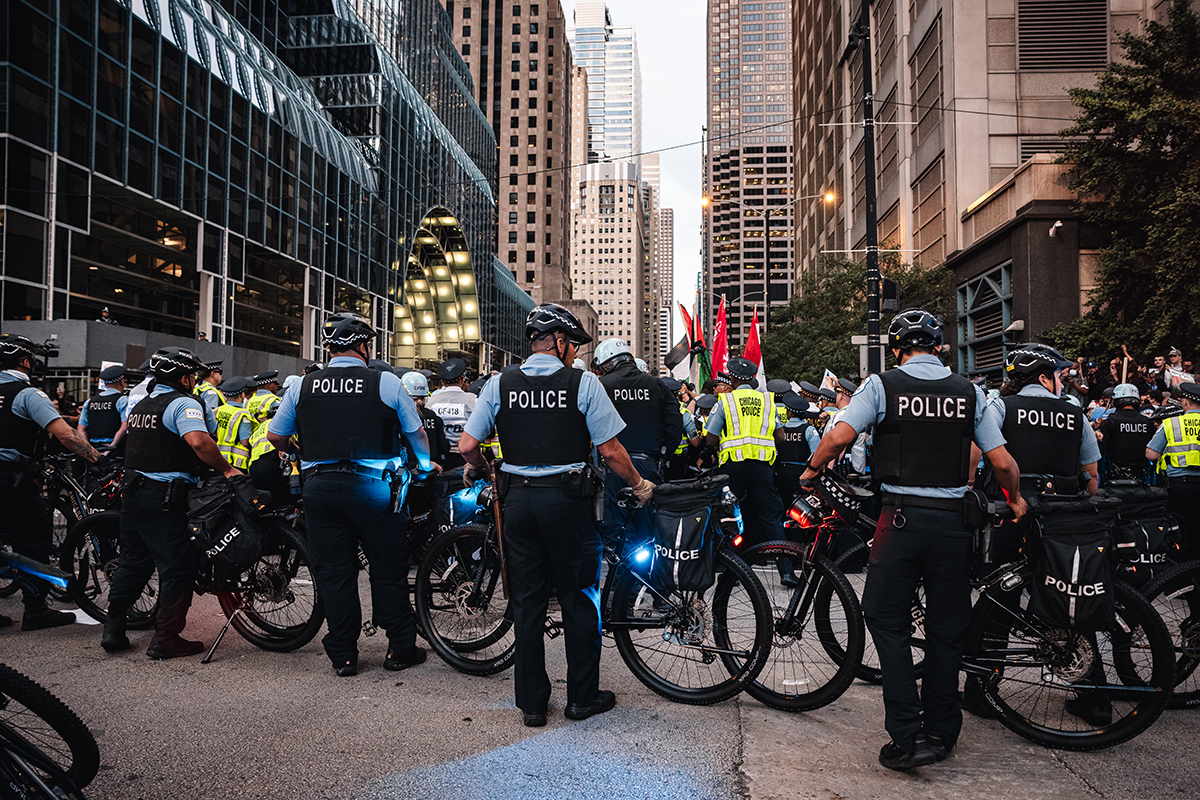
This story was published by the Trace, a nonprofit newsroom covering gun violence in America. Sign up for its newsletters here.
Seven years ago, Zhiene Washington was talking to her mother on the phone when she heard gunshots. Her son, Tre’Velle E. Washington, 25, had just left to buy cigarettes. She threw her phone down, yelled his name, and ran outside.
She looked to one side and saw nothing. She turned in the other direction and saw Tre’Velle lying on the ground. He was alive, and she hoped it was not too late. As they waited for an ambulance and police, she kissed his forehead and wiped away his tears.
When police arrived, two officers pulled her away from her son to question her about the shooting.
That night was the last time police contacted her about her case, she said. They didn’t follow up with questions or updates—and when Washington called, she said she was told that the person in charge of the investigation was not available. To this day, she still doesn’t know who killed her son. She’s among the thousands of Chicagoans still searching for answers about their late loved ones, the consequence of a problem that’s plagued the city for more than a decade.
In Chicago, police have typically solved gun crimes at lower rates than those in other cities. A report published in early 2025 by Live Free Illinois, a faith-based organization focused on improving public safety, revived the conversation about the city’s arrest rates. Researchers spoke to residents from the south and west sides who said that persistently low clearance rates have continued to fuel distrust in the criminal legal system.
Using records obtained through the Freedom of Information Act, the Trace analyzed 8,750 homicides between 2010 and 2024 and learned that Chicago police made arrests in 27 percent of them. The majority of these cases were gun homicides. In the past 15 years, police arrested someone in 23 percent of fatal shootings. The rate of cases cleared by arrest fluctuated over the past decade, but the overall trend is downward, especially after 2022—a time when gun homicides also began falling. In 2024, police made arrests in 16 percent of fatal shootings within a year of the incident, down from 23 percent in 2022, when the Trace last investigated this issue.
National rates for homicides that were cleared by any means ranged from 50 percent in 2010 to 61 percent in 2023, compared to 50 percent to 35 percent in Chicago.
Police arrest fewer shooters of Black victims
In Chicago, fatal shootings of Black people were cleared with arrests at a significantly lower rate than shootings that killed white people, even though Black people make up 80 percent of Chicago’s fatal shooting victims.
Survivors told the Trace that unsolved cases in Black and Brown neighborhoods make residents feel like police don’t care about their cases. An unsolved case, Washington said, leaves unanswered questions. “Maybe with somebody in custody you could actually feel some closure,” she said. It’s hard, Washington added, not to feel resentful when she sees other cases get solved while she hasn’t seen any movement on her son’s investigation.
“To not have a detective even pick up the phone, it’s a slap in the face, like my son’s life didn’t mean as much,” Washington said. “He meant a lot to a lot of people, and he still does.”
Fifteen years worth of clearance data from the Chicago Police Department (CPD) shows that just over 21 percent of Black fatal shootings resulted in arrests, compared to almost 38 percent of white ones.
“In situations where people are in a vulnerable moment and need support, their lifestyle and character is judged without anyone even knowing who that individual is,” said the Reverend Ciera Bates-Chamberlain, executive director of Live Free Illinois. “If you’re a young Black man, they automatically assume that it’s gang-involved—they don’t see beyond that.”
These preconceived notions, she said, cause police to treat Black victims poorly. Often, survivors said, law enforcement officers question the character of their late family members and become silent during the investigative process.
The Trace asked CPD detailed questions about the clearance rate analysis. A spokesperson responded with a statement describing the department’s efforts to improve homicide investigations. “While the improvements we have made to the homicide investigation process within the past few years have strengthened our response, homicide investigations remain complex cases,” the statement said. “These cases can be extensive and lengthy based on the evidence available.”
When Tre’Velle was shot in 2018, Washington said she thought police lacked empathy toward her and treated her son like a culprit. As she comforted her dying son, Washington said she was pulled away from him. “My son’s dying, and they’re questioning me instead of allowing me to be with him the last few minutes,” she said. While she welcomed questions from police, their lack of sensitivity sowed distrust.
That night, Washington recalled, a detective noted that her son’s friends had arrived quickly after he was shot, insinuating that his friends may have been involved in the shooting. To her, she said, it almost felt as if they blamed him for his own death because he had a history with the justice system. Tre’Velle had been released from prison in 2017 after having been convicted in 2015 for a drug-related crime. Although he planned to move out-of-state to get away from the violence and crime in their neighborhood, she said, the authorities boxed him in as a “felon,” a “gangbanger.” Because of his history, she thinks police have made his death a low priority to solve.
CPD data shows that investigations of almost 21 percent of victims with a criminal record led to an arrest, compared to almost 31 percent of cases whose victim didn’t have one. There’s a smaller disparity between those marked with a perceived gang affiliation. Almost 21 percent of cases in which police labeled a victim as being affiliated with a gang resulted in arrests, compared to 24 percent whose victims did not have that label.
These classifications, said Veronica Higgins, should not affect whether cases get solved. In 2023, two men shot and killed her 28-year-old son, Ronnie Roper, after he left the Roseland outreach center for Chicago CRED, a gun violence prevention nonprofit. He had been arrested for a drug-related offense, but, she said, was trying to change his life. The day Ronnie died, she said, police questioned her about something her son had previously been accused of, which made her feel like they were stereotyping him.
Police have not updated Higgins on her son’s investigation.
“Regardless of what a person looks like, regardless of their ZIP code, regardless of their background, their arrest history, if a person has been impacted by violence, the police, the state’s attorney, everybody a part of the system, has to treat that person as an individual and as a person who has encountered a crisis,” Bates-Chamberlain said. “Oftentimes, we know that’s not the case.”
The Trace also asked CPD for details on its interactions with surviving family members and updates of Tre’Velle and Ronnie’s cases. The written response did not offer specifics, but said that in 2021, CPD created the Family Liaison Office, which supports victims’ families.
“It’s almost as if they give up”
Low arrest rates in fatal shootings can affect entire communities, survivors said. While Black neighborhoods in Chicago’s south and west sides have the highest rates of gun violence, police make fewer arrests in those neighborhoods than in white areas. In East Garfield Park, where Tre’Velle was killed, there were 242 fatal shootings between 2010 and 2024, but police made arrests in only 13 percent of them.
There were several potential witnesses to Tre’Velle’s shooting, Washington said, but no one came forward. She also never saw officers canvass her street. “It’s almost as if they give up before they even put the effort in,” Washington said. “We’re overlooked.”
People also hesitate to come forward, Bates-Chamberlain said, because they’re not confident that police will follow up on their tip.
“The police department is allowed to live on this myth that Black communities don’t cooperate and it’s their fault as to why clearance rates are low, instead of holding themselves accountable,” Bates-Chamberlain said.
Even when fatal shootings are solved with an arrest, it takes longer for law enforcement to solve fatal shootings of Black people. Police arrested a shooter within a year in 18 percent of Black fatal shootings, compared to nearly 36 percent of white ones. Half of all cases solved by arrest happen in 12 days when the victim is white; when the victim is Black, it takes nearly 44 days.
Until police find a shooter, survivors and researchers said residents feel unsafe and worry that gunmen live in their midst. “Living with an unsolved case creates a sinking feeling,” Higgins said. Through word of mouth and from social media posts, she has some idea of who killed her son, but is resigned to the fact they may never be arrested because she hasn’t seen police working to solve the case.
Clearance rates are worsening, even as there are fewer shootings to solve
Early this year, the CPD published a report that declared the 2024 clearance rate for homicides to be 56, “the highest since 2015.” Yet the number they praised included cases solved by “exceptional means,” which describes instances when the suspected offender dies before conviction or when prosecutors lack sufficient evidence to convict a suspect. The report didn’t note whether these were cases cleared from incidents within one year, or how long it took to clear them.
The Trace’s analysis defined cleared cases as fatal shootings that were resolved by an arrest, and looked at cases that were cleared within a year of the shooting.
Live Free Illinois is advocating for the Homicide Data Transparency Act, which would establish a statewide standard for law enforcement agencies to track and publish monthly reports on homicides with a breakdown of how cases were cleared.
Better reporting from CPD, Bates-Chamberlain said, will allow the community to hold police accountable and pressure those responsible for clearing cases—including law enforcement and prosecutors—to prioritize the problem.
It’s troubling, said Bates-Chamberlain, that a billion-dollar agency continues to have disappointing results: CPD data shows that, even as fatal shootings dropped 20 percent between 2022 and 2024, clearance rates that led to an arrest within a year did not improve, despite implementing a number of recommendations made by the Police Executive Research Forum, a police study and policy nonprofit organization that evaluated the CPD’s homicide investigation process in 2019.
Many survivors said they understand that solving cases can be hard; they just want assurance that the loss of their loved one is being taken seriously. Higgins remembers her son as the life of the party. The last get-together before his death was for Cinco de Mayo. She remembers him wearing a sombrero, acting silly, smiling, and having fun.
Now, she’s learning to cope with the void his death has left. Seeing police try to solve her son’s case, she said, would help her heal. He wasn’t just another young Black man shot dead. He was a person who was loved, and someone who will always be missed.
George LeVines contributed data reporting, editing, and graphics.

